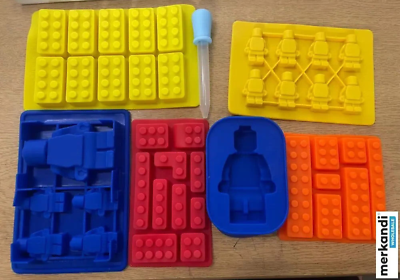
How are LEGO parts updated?
Alexander DiraviamShare
Have you ever wondered how LEGO parts get updated? I mean, surely they can’t be the same bricks today that they were in the 50s.
And in most ways they’re not.
Virtually every one of the more than 4,000 lego elements is compatible with the legos of the olden days. But over time, the bricks have become less flexible, have fewer noticeable gaps to release internal stress, have tubes at the bottom, connect in more ways, and become less brittle.
The dyes that are added to the plastic have also changed too as you’ll find that many blue parts from the early 2000s and dark red and dark brown pieces from as late as 2020 were incredibly prone to breaking. The ABS plastic was also improved since the ratios and chain lengths of the 3 plastic molecules that make it up can be adjusted to give the plastic desired qualities like more or less bendiness and scratch resistance.
Even the process has been adjusted as new technology becomes available to use somewhat less fossil fuels, reduce the rate of bubbles getting trapped in the plastic, reduce the flash, or leftover plastic, and be more structurally sound by adjusting how long a brick “cooks” for.
One more important factor is clutch power (also where the movie “Clutch Powers” gets its name from). This is the amount that bricks stick together. Legos need to last a long time and still be play-with-able decades later. Too strong of a connection, and the bricks will crack. To little and they won’t stick together. So lego kept adjusting the tolerance, or variation, in their bricks and fine-tuning the ABS recipe to give them a connectivity system second to none. They also created a machine to keep connecting and disconnecting bricks so they could simulate wear and tear on bricks as they get played with. After all, you don’t want your bricks to be beautiful but single-use (R.I.P. to my dozens of brown 4x4 plates. You will be missed.)
But the biggest cost by far is creating a new mold for a part. These have to have much higher tolerances than the lego bricks so that they don’t change shape even when they start to wear down over time. They also have to be made out of very hard and head resistant materials so they don’t deform when molten plastic is poured into them and they are less likely to chip. But with harder materials comes more expensive tools to make them and with more precision comes higher production costs. Despite that, lego brick molds have dozens of parts that are interchangeable for easy repair and adjustment. If you’re lucky, you can even get bricks from when the machines were being calibrated and the lego logo is upside down or the colors are marbled or when they were testing out experimental colors.
Originally, when the machines became too worn down to use, the molds were kept and eventually put on the floor of the LEGO house in Copenhagen, Denmark. But as the risk of corporate espionage grew, they started destroying the molds so they could not be sold or reverse engineered.
Now, when do they decide to make a new part mold, and how do they do it?
When new design processes require new parts or when a part design has repeatedly been shown to be weak, it becomes a good candidate for improvement. You’ll notice that the attachment point on parts with clips, for example, has gotten thicker over time. During the design process, designers check to see if there is a combination of existing parts that can be used so they don’t need to make a new part, but if it is proven to be useful, they will begin by using a high-precision 3D printer to make prototypes of the part and gradually iterate on it. By the end, the part is checked to make sure it is compatible with as many other lego pieces as possible and sent off for mass-production prototyping. The mold will then be begun and will go through many iterations before the correct tolerancing is achieved. It is also important to note that molds are created through subtractive machining, meaning that material is subtracted from a larger block to get the desired shape. It is incredibly difficult to add material to something like a mold, since it is both heat and scratch resistant, so it is treated as not possible and the mold cavity can only be made bigger, not smaller.
Finally, the product roles out onto production lines and eventually onto PAB (Pick-a-Brick) as well. Though I’m not sure about the present, in the past, you may find the same set made in two different years with different versions of the same part since the creation of a new part does not always align with the creation of a new set.
And that’s pretty much where the story ends. The new molds will eventually wear out and be replaced, and technology will improve as will the design and once again we will find ourselves back at the drawing board for the search for the next best part.
- Alex

